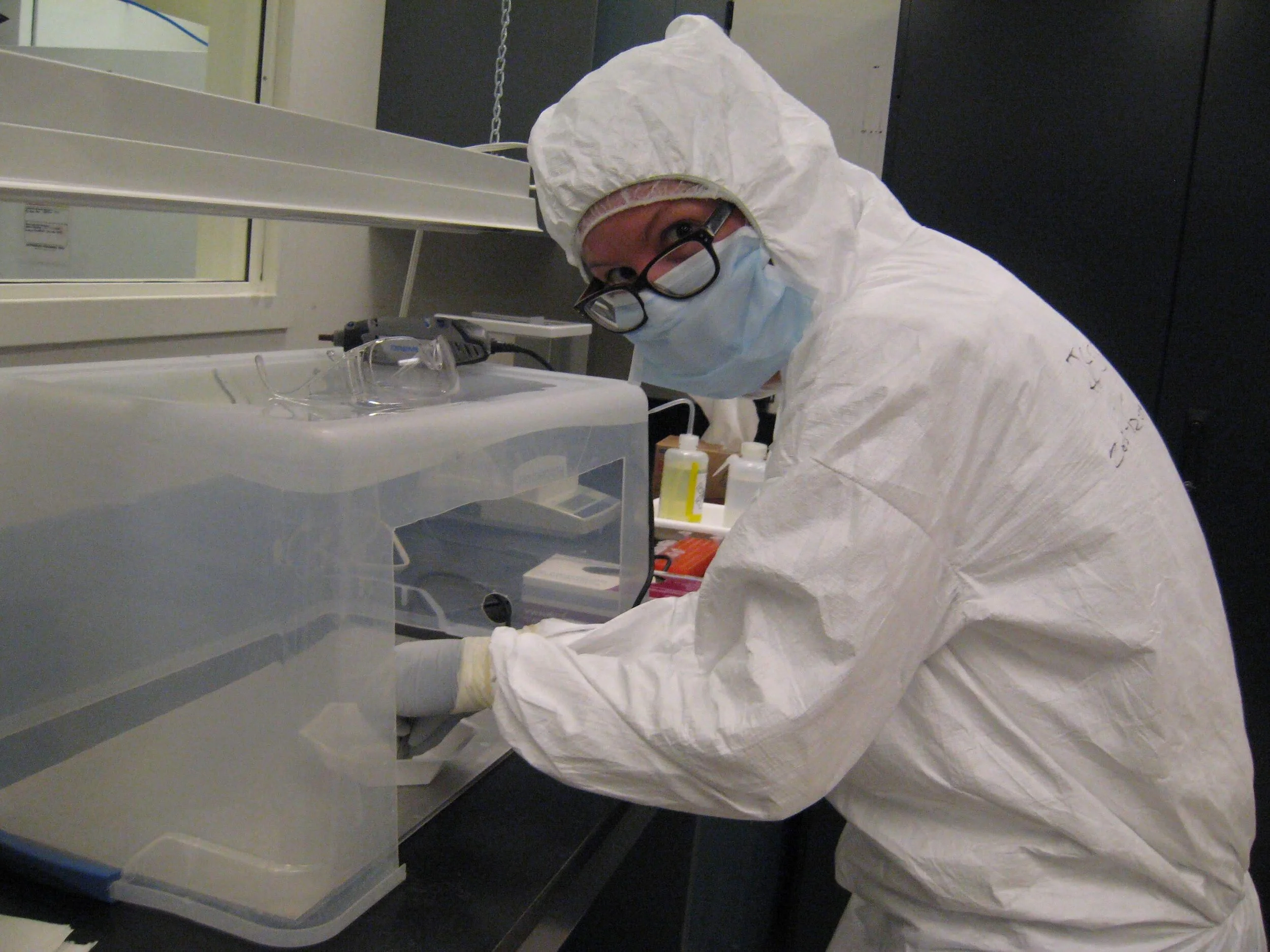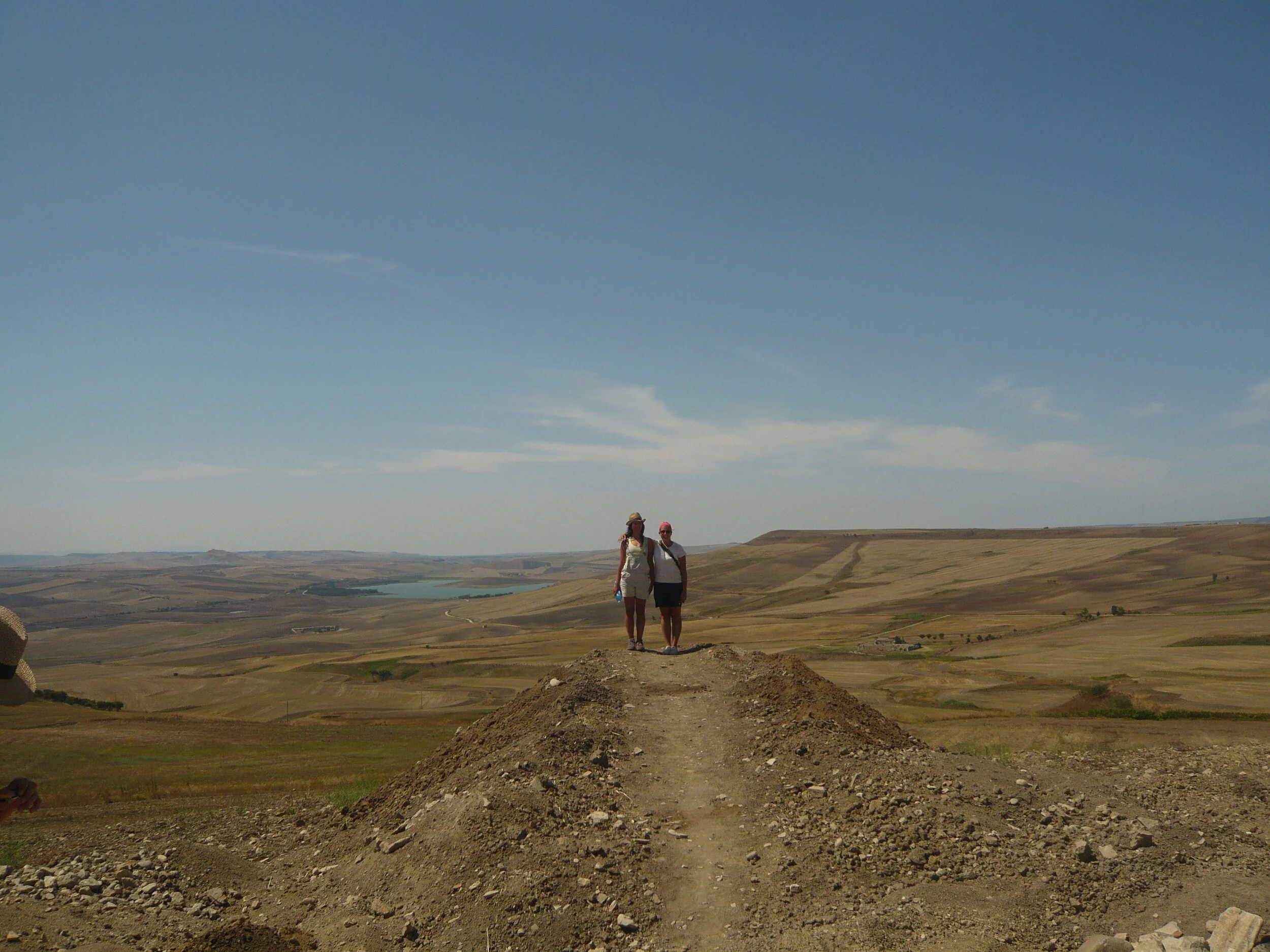So this week is particularly heavy, and I don’t feel right starting out this episode without addressing that. I have been thinking for a long time about the role of podcasting in pandemics, and whether it’s silly to produce and share episodes when everyone’s minds are riddled with panic, fear, and an ever-growing awareness of just how much food you have in your pantry.
But then I remembered that this show has ALWAYS been about us as a community. This isn’t about me, it’s about what we can offer each other in terms of sharing knowledge and experience. And right now, it’s also about what I can offer you as a break from the endless Twitter feed refreshes and breaking news briefs. So we continue, and hope we can offer you a little peace and distraction, if only for a half hour.
Jessica doing labwork!
Okay, so this week we’re exploring the role of food in disease outbreaks with my friend and McMaster colleague, Jessica Hider. She’s a PhD candidate in my anthropology department at McMaster and works in McMaster’s uber-cool Ancient DNA Centre. Jess looks at the spread of pathogens in pre-Rome and ancient Rome. She combines ancient DNA analyses with bioarchaeology and paleopathology (or the study of ancient diseases and pathologies on bone). Her main focus and interest is a disease known as brucellosis – which is a lesser known but absolutely fascinating disease to explore. I will let her do the expert explaining on what it entails in the interview!
We’re chatting about the differences between food-borne diseases, zoonotic diseases, and the ways that food can help spread disease in the past. For those of you who are really tired of hearing about COVID-19, don’t worry – we don’t really touch on it. But we do talk about Typhoid Mary, and she’s a real hoot.
A pie chart detailing the amount of brucella pathogen DNA found in Jessica’s research sample
Learn More About Jess:
Jess doing fieldwork in Italy




